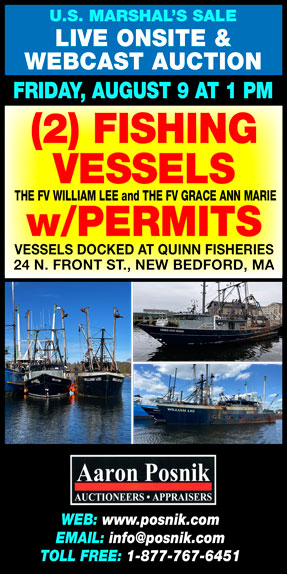 The tremendous importance of Northeast fisheries to local, state, and national economies is the main message of “Fisheries of the United States 2012,” the latest installment of the annual report from the National Marine Fisheries Service that compiles statistics on landings and their value for ports around the nation.
The tremendous importance of Northeast fisheries to local, state, and national economies is the main message of “Fisheries of the United States 2012,” the latest installment of the annual report from the National Marine Fisheries Service that compiles statistics on landings and their value for ports around the nation.
The document is a must-read, especially for members of this region’s congressional delegation, many of whom are relative newcomers to the job of representing their fishing industry constituents. These congressmen and senators are now in a position to update and improve the Magnuson-Stevens Fishery Conservation and Management Act (MSA) and other laws, including the Saltonstall-Kennedy Act, which was designed to be a source of significant funding for marketing and research efforts but is not being executed the way it was intended.
For the 13th consecutive year, New Bedford was the highest-valued port in the country. The city handled 143 million pounds of seafood worth $411 million in 2012. Much of the value was attributed to sea scallops – more than 36 million pounds of them – worth an average ex-vessel price of $9.83 per pound. Scallop landings also were immensely important to fishing communities in New Jersey and Virginia. Cooperative research has proven to be a vital component of the successful management of this highly valuable fishery, as well as many other Northeast fisheries, and it must be a priority issue during MSA reauthorization.
American lobster landings totaled 149.6 million pounds, an increase of 18% compared to the previous year, with an ex-vessel value of $429.3 million. Lobster is the most valuable fishery in the state of Maine, fueling the economies of scores of coastal communities. Lobster is important to fishing ports in other states, too, especially Massachusetts. Yet, the average ex-vessel price in 2012 dipped to $2.87 per pound. The need for effective marketing programs to expand demand is critical, a fact recognized by Maine, which is about to take matters into its own hands and embark on a new, industry-funded promotion campaign.
And then there’s groundfish – cod, haddock, and flatfish that were once mainstays of ports like Gloucester, Portland, Boston, and Provincetown. While flatfish and haddock landings increased between 2011 and 2012, landings and value of cod dipped. And we all know that when the report comes out next year, landings of many groundfish species will have declined due to severe quota cuts imposed this year. Building flexibility into the MSA is essential to allow fishermen to catch their quotas of relatively healthy groundfish stocks.
In the meantime, we need to develop markets for abundant alternative species such as dogfish and skates. The US Department of Agriculture certifying these species for its large-scale commodities purchase program would go a long way in that regard.
The commercial fishing industry is clearly a huge economic contributor to the Northeast region. It needs and deserves congressional action to support cooperative research, MSA reforms, marketing initiatives, and disaster aid to ensure that fishermen and coastal infrastructure remain viable. /cfn/








